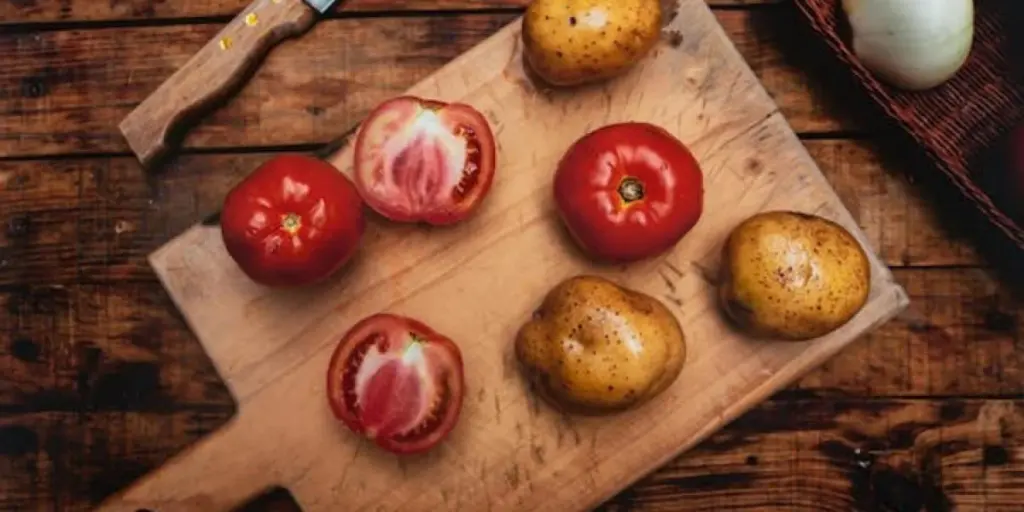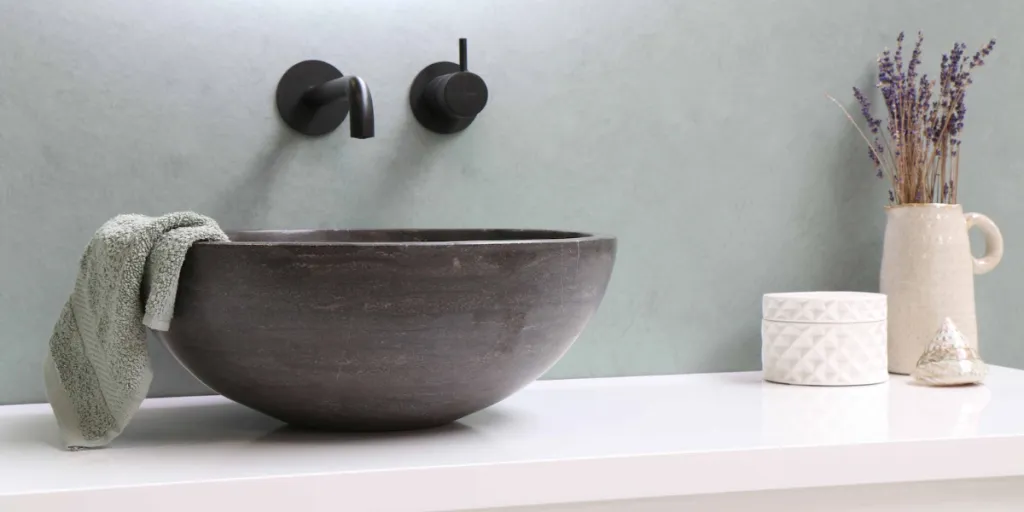In the dynamic world of kitchen essentials, the chopping block stands as a cornerstone for culinary efficiency and success. This fundamental tool, often overlooked, plays a pivotal role in the preparation of a wide array of dishes, offering both functionality and aesthetic appeal to the kitchen workspace. With a variety of materials, sizes, and designs available, the right chopping block not only enhances the cooking experience but also contributes to the overall workflow and safety in the kitchen. Its selection, therefore, becomes a critical decision for those tasked with equipping professional kitchens, where quality and durability are paramount. This introduction sets the stage for a deeper exploration into the nuances of chopping block selection, aiming to assist in making informed choices that align with specific culinary needs and preferences.
Table of Contents:
1. Chopping block varieties and applications
2. 2024 market insights for chopping blocks
3. Key considerations in chopping block selection
4. Leading chopping block models and their features
5. Concluding thoughts
Chopping block varieties and applications
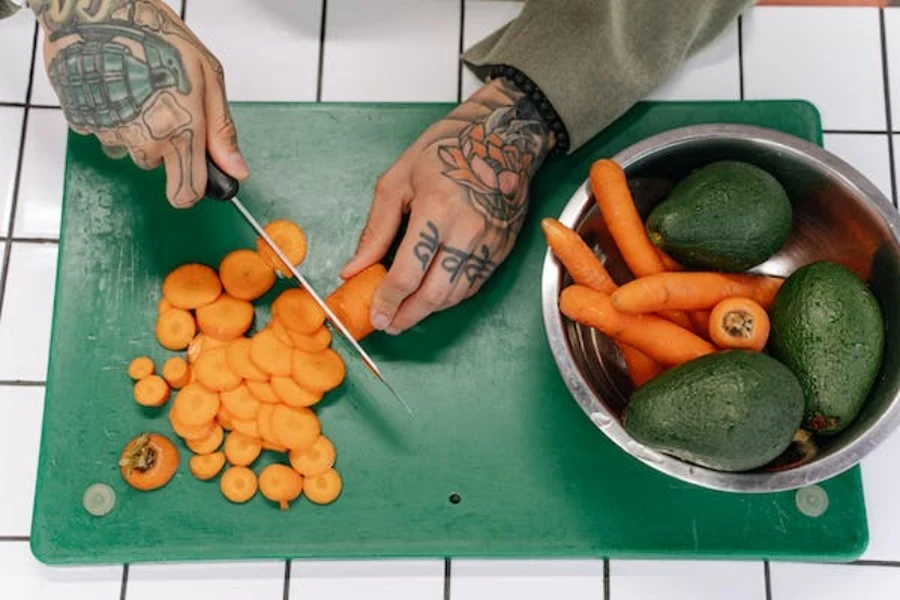
Different materials and their benefits
Chopping blocks, integral to the culinary world, come in a variety of materials, each offering distinct benefits to enhance kitchen operations. Wood, a traditional choice, is favored for its durability and classic aesthetic. Sources highlight the natural ability of wooden blocks, like those made from teak or maple, to be gentle on knives, reducing blade dullness. This material, however, demands regular maintenance, including oiling, to prevent warping and cracking.
Plastic chopping blocks present a more modern alternative, lauded for their ease of cleaning and maintenance. As per the insights gathered, these blocks are often dishwasher safe, offering a hygienic option as they resist bacteria and odor absorption effectively. Their lightweight nature and affordability make them a practical choice for high-volume settings. The downside, as noted, is their tendency to dull knives faster and show wear and tear more prominently over time.
Composite materials emerge as a middle ground, combining the durability of wood with the low maintenance of plastic. These blocks, often made from a blend of wood fibers and resin, offer a robust cutting surface that withstands heavy use without sacrificing knife edges. They are also resistant to moisture and bacteria, making them a hygienic option for busy kitchens.
Usage scenarios for various chopping blocks
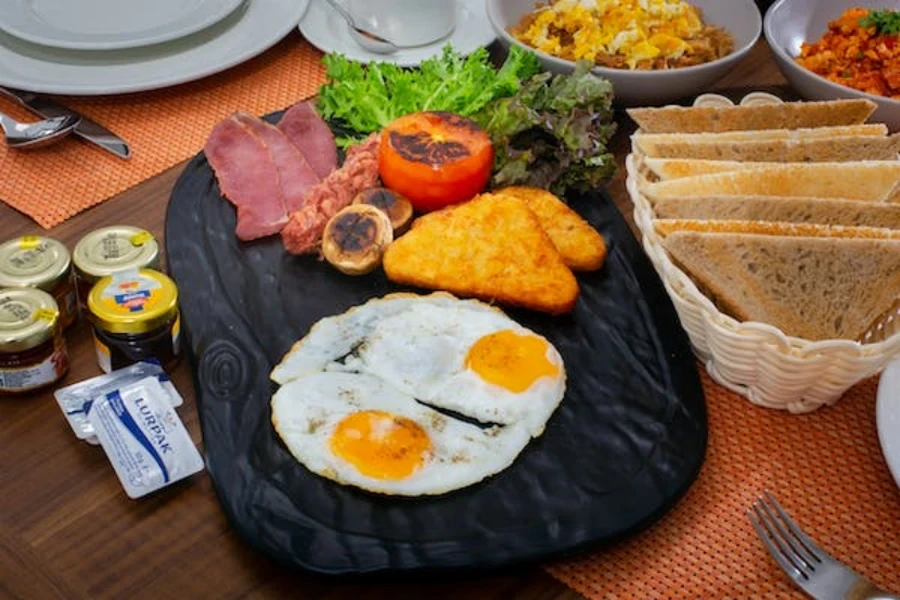
In terms of applications, the choice of chopping block material aligns closely with specific culinary tasks. Wooden blocks, with their self-healing and knife-friendly properties, are ideal for precision tasks like fine chopping and slicing. They are often the preferred surface for chefs handling delicate ingredients or performing intricate cuts. However, their porous nature makes them less suitable for handling raw meat, where hygiene is a paramount concern.
Plastic blocks, on the other hand, are well-suited for handling raw meats, fish, and poultry. Their non-porous surface allows for thorough cleaning and disinfection, crucial in preventing cross-contamination. These blocks are often color-coded in professional kitchens to designate specific uses, such as red for raw meat and green for vegetables, enhancing kitchen safety and organization.
Composite blocks find their niche in environments where both durability and hygiene are key. Their robust construction makes them suitable for heavy-duty tasks like chopping hard vegetables or portioning meat. At the same time, their non-porous surface ensures easy cleaning and maintenance, making them a versatile option in diverse culinary settings.
In summary, the selection of a chopping block is influenced by a combination of factors including material properties, maintenance requirements, and the specific culinary tasks they are intended for. Each material, be it wood, plastic, or composite, brings unique advantages to the table, and the choice ultimately hinges on balancing these factors against the specific needs of a professional kitchen environment.
2024 market insights for chopping blocks
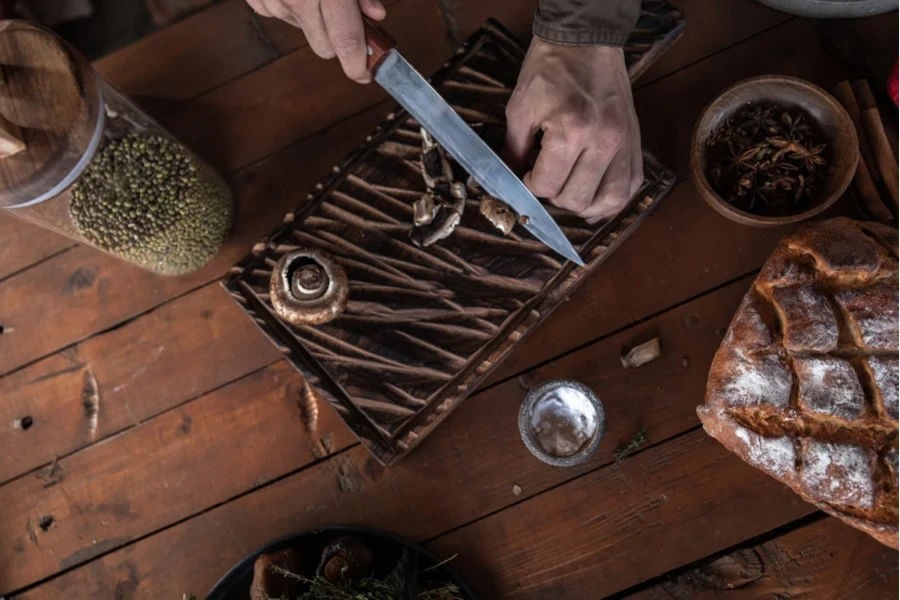
Current market trends and consumer preferences
The chopping block market is undergoing significant transformations as it approaches 2024, with trends and consumer preferences evolving rapidly. The market is currently valued at approximately US$ 2.9 billion in 2022 and is projected to grow significantly, reaching an estimated US$ 5.5 billion by the end of 2032. This growth is expected to occur at a Compound Annual Growth Rate (CAGR) of around 6.6% during the forecast period from 2022 to 2032. A key trend is the increasing demand for environmentally sustainable and eco-friendly products. This shift reflects a broader consumer preference towards products that align with environmental consciousness and sustainability.
Another significant trend is the rising incorporation of technology in chopping block designs and materials. State-of-the-art technologies such as artificial intelligence, machine learning, and blockchain are being harnessed to create innovative products. These technological advancements are not just elevating the quality and efficiency of chopping blocks but are also setting new standards in terms of effectiveness and efficiency.
Impact of technological advancements
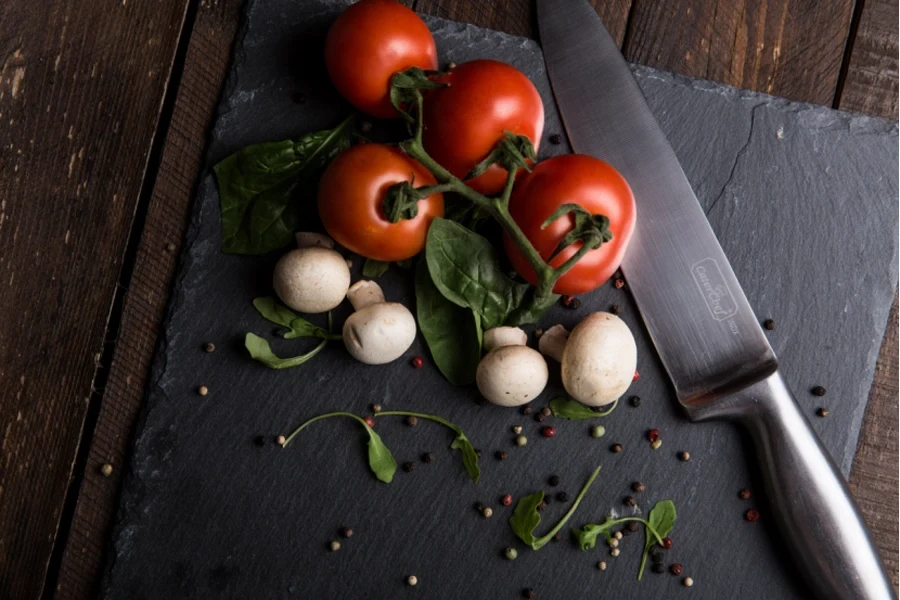
The impact of these technological advancements is profound. They are reshaping the very nature of chopping blocks, transforming them from mere kitchen tools to sophisticated, multifunctional devices. For instance, the integration of AI and machine learning is leading to the development of chopping blocks that can assist in food preparation, offering guidance on cutting techniques or even helping to manage kitchen inventory.
Furthermore, the market is witnessing a shift towards customization and personalization. Consumers are increasingly seeking chopping blocks that cater to their specific culinary needs and preferences, whether it’s for professional chefs in commercial kitchens or for home cooks who value both functionality and aesthetics. This trend is driving manufacturers to offer a wider range of products, from basic models to high-end, customized options.
As the market continues to grow, key players are focusing on offering innovative and high-performance products. They are leveraging advancements in technology to stay ahead of the curve. Additionally, expanding their distribution channels to target new customers and strategic partnerships are becoming crucial in strengthening market presence and enhancing competitiveness.
In summary, the chopping block market in 2024 is characterized by a strong emphasis on sustainability, technological innovation, and customization. These trends are not only shaping consumer preferences but are also driving manufacturers to rethink their product designs and marketing strategies. As the market evolves, it presents both challenges and opportunities for businesses in this sector, requiring them to stay agile and responsive to the changing landscape.
Key considerations in chopping block selection

Evaluating size and durability
When selecting a chopping block, evaluating size and durability is crucial for ensuring it meets the specific needs of a professional kitchen. The size of the chopping block should be chosen based on the available workspace and the types of food being prepared. For instance, Boos Block Chopping Boards, known for their quality and durability, come in various sizes. A larger board, like the John Boos Block R02 Cutting Board measuring 24 x 18 x 1.5 inches, is ideal for cutting larger foods such as whole cabbages, providing ample space for other ingredients. On the other hand, smaller boards, like the John Boos Block Chop-N-Slice measuring 16 x 10 x 1 inch, are suitable for kitchens with limited space or for simpler cutting tasks.
Durability is a significant selling point for high-quality chopping blocks like Boos Blocks. These boards are known for their longevity, with the potential to last for generations if properly maintained. Made from maple wood, a closed-grain hardwood, they are robust and can withstand a variety of chopping activities. The thickness of these boards, typically around 1.5 inches, adds to their durability, allowing for heavy-duty use such as cutting meats or large vegetables.
Maintenance is key to preserving the durability of a chopping block. Boos Blocks, for example, require regular seasoning with a special oil to maintain their condition. This process involves applying the oil to the board and re-seasoning it every couple of months. Proper care also includes avoiding submerging the board in water and scrubbing it thoroughly after each use.
In conclusion, the appropriate size of a chopping block depends on the specific requirements of the kitchen and the types of food being prepared. Durability is a crucial factor, with high-quality materials like maple wood offering longevity and robustness for various culinary tasks. Regular maintenance, including proper cleaning and oiling, is essential to preserve the chopping block’s condition and ensure its longevity in a professional kitchen setting.
Maintenance and hygiene factors
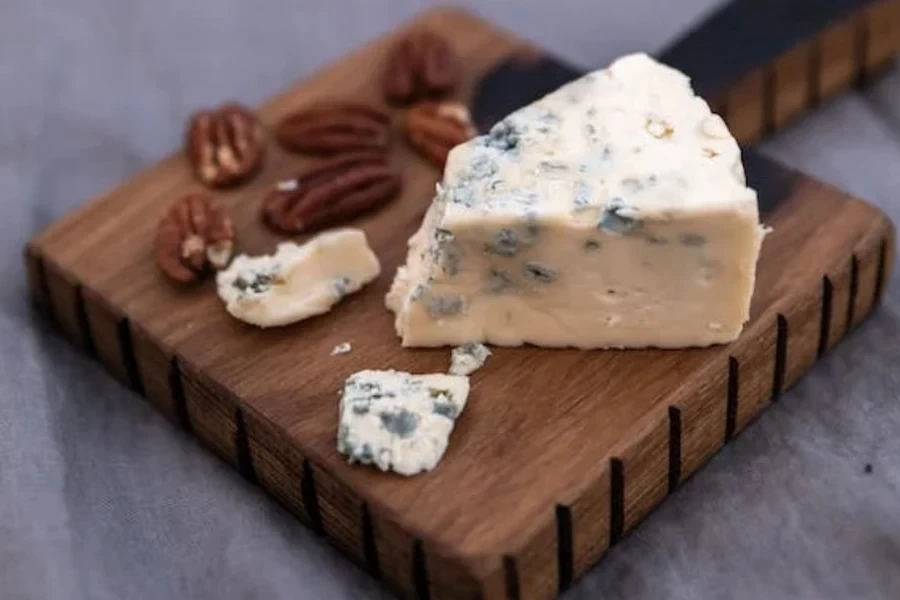
Maintenance and hygiene are critical factors in the selection of chopping blocks, especially in professional kitchen environments where cross-contamination can lead to food-borne illnesses. Chopping boards, being primary food preparation surfaces, are susceptible to various types of contamination, including biological, chemical, and physical. The risk of cross-contamination is particularly high with items like raw meat, chicken, and fish, which can harbor bacteria and viruses such as Salmonella and E.coli.
To mitigate these risks, several safety tips and practices should be followed. Firstly, it is advisable to use chopping blocks made of materials less likely to absorb contaminants, such as rubber or hard acrylic, instead of wood. While wood has natural antibacterial properties, it is more prone to absorbing materials and requires more rigorous maintenance.
The use of different chopping blocks for different types of food is highly recommended. For instance, using a black board exclusively for raw meat, a green one for fresh produce, and a yellow one for raw fish can significantly reduce the risk of cross-contamination. If using the same board for different foods, it is crucial to clean the chopping block thoroughly with hot soapy water after each use, especially when switching between raw and ready-to-eat foods.
Sanitization of chopping blocks is another vital step. This can be done either with steam or chemical sanitizers. After washing and sanitizing, chopping blocks should be allowed to air-dry or dried with paper towels. Using tea towels for drying is risky regarding cross-contamination and should be avoided.
It is also important to dispose of chopping boards that are scratched and cracked. Bacteria can easily hide within the grooves of old boards, making them unsafe for food preparation. Regular inspection and timely replacement of chopping blocks are essential to maintain hygiene standards in the kitchen.
In summary, proper maintenance and hygiene practices for chopping blocks are essential to prevent food contamination and ensure safe food handling. This includes choosing the right material, using different boards for different food types, thorough cleaning and sanitizing, and regular inspection and replacement of old or damaged boards. These practices are crucial in any kitchen, be it commercial or home, to ensure food safety and prevent health risks associated with food-borne illnesses.
Leading chopping block models and their features
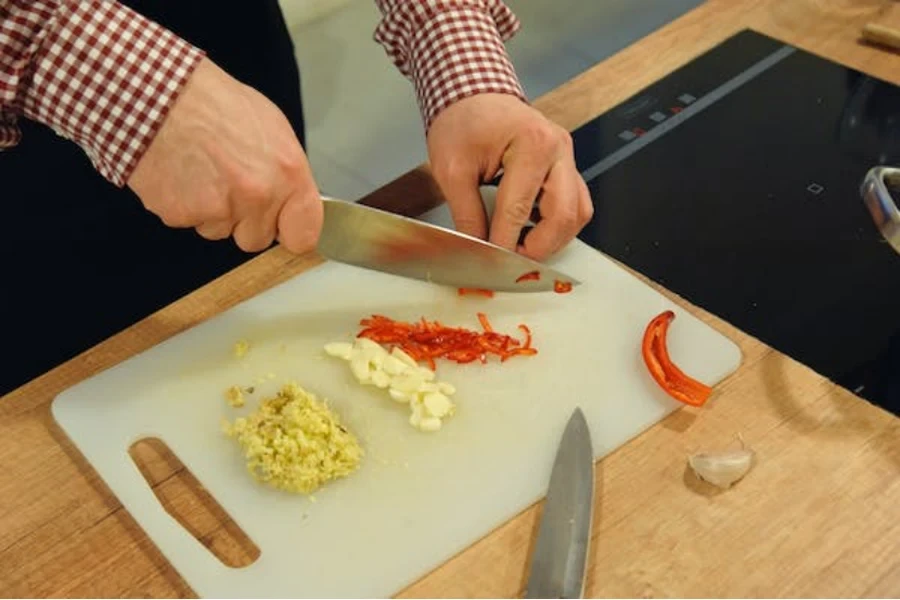
The chopping block market is poised for significant growth and innovation in 2024, with several leading models emerging as top choices for both household and professional use. These models are distinguished by their unique features, catering to diverse needs in terms of practicality, durability, and user experience.
Top models for 2024
In 2024, the chopping block market showcases a variety of models, each tailored to meet specific culinary needs with their unique features. Here’s a closer look at some of the top models and their distinctive characteristics:
John Boos Reversible Maple Cutting Board: A standout in the market, this model is renowned for its robust construction and longevity. Made from sustainably sourced, high-quality maple wood, it measures 24 x 18 x 1.5 inches, offering ample space for extensive food preparation. Its reversible design doubles the usable surface area, making it a versatile choice for both commercial kitchens and home use.
Teakhaus by Proteak Edge Grain Carving Board: Known for its water-resistant qualities, this teak wood chopping block is ideal for heavy-duty use. Measuring 20 x 15 x 1.5 inches, it features a juice canal that captures liquids, keeping the workspace clean. The teak wood’s natural oils provide added durability and resistance to moisture, making it a long-lasting choice.
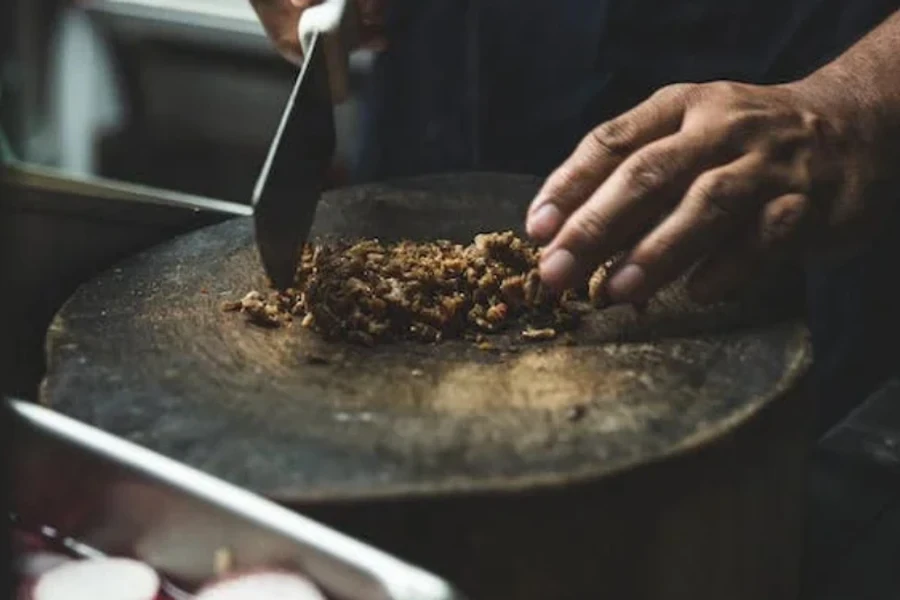
OXO Good Grips Utility Cutting Board: This plastic cutting board is a popular choice for its affordability and practical design. It measures 14.5 x 21 inches, providing a substantial cutting surface. The board is non-porous, dishwasher safe, and features soft, tapered handles for easy lifting and non-slip edges for stability during use.
Larch Wood Canada End Grain Cutting Board: This artisanal board is known for its unique end-grain construction, which is gentle on knives and self-healing. Measuring 17.5 x 13.5 x 1.5 inches, it’s crafted from larch wood, offering both beauty and durability. The end-grain design creates a striking pattern, making it as much a piece of art as a functional kitchen tool.
BambooMN Brand Bamboo Grooved Cutting Board: This eco-friendly option is made from bamboo, known for its sustainability and strength. The board measures 18 x 12 inches and features a groove around the perimeter to catch liquids. Bamboo’s natural properties make it less porous than hardwoods, offering a hygienic surface for food preparation.
Each of these models brings something unique to the table, whether it’s the sustainable sourcing of the John Boos board, the moisture-resistant properties of the Teakhaus model, the practicality of the OXO board, the artisanal beauty of the Larch Wood board, or the eco-friendliness of the BambooMN board. In 2024, these chopping blocks stand out for their blend of functionality, durability, and aesthetic appeal, catering to a wide range of preferences and kitchen needs.
Comparative analysis of model features
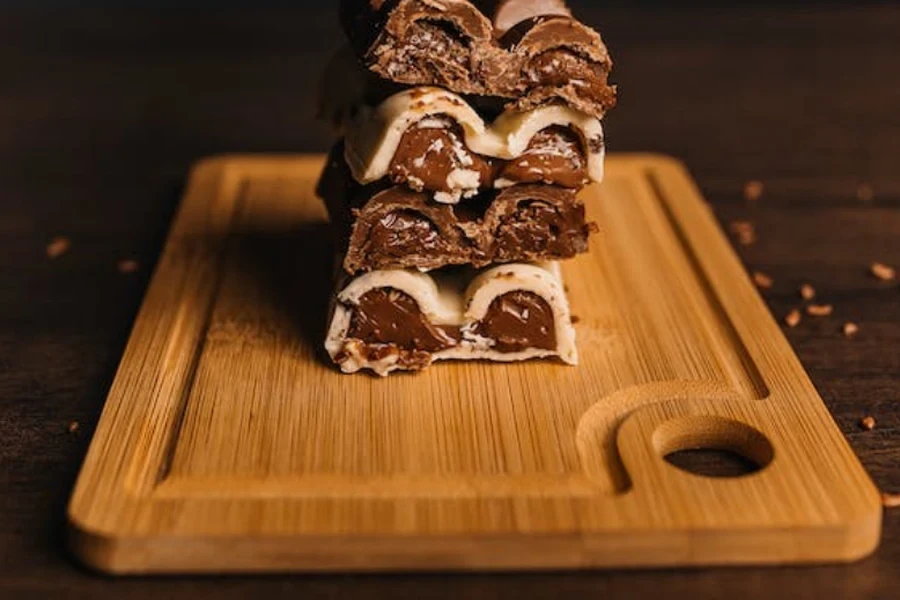
In 2024, the chopping block market is characterized by a diverse range of models, each with unique features catering to different culinary needs. A comparative analysis of these models reveals distinct advantages and considerations:
Material quality and durability:
John Boos Reversible Maple Cutting Board: Crafted from sustainably sourced maple, this board is known for its durability and resistance to knife marks. Maple’s density makes it a long-lasting choice for frequent use.
Teakhaus by Proteak Edge Grain Carving Board: Teak wood is naturally water-resistant and durable. This board’s edge grain construction contributes to its longevity and resistance to warping.
OXO Good Grips Utility Cutting Board: Made from a high-quality plastic, this board is less durable than its wooden counterparts but offers the advantage of being dishwasher safe and less prone to bacterial growth.
Design and ergonomics:
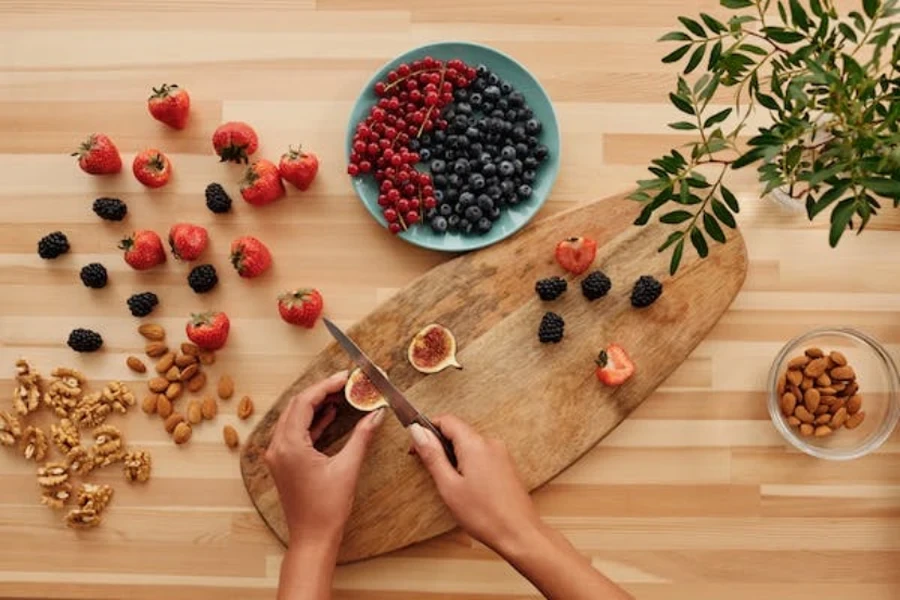
John Boos Board: Features a reversible design, doubling the usable surface area and making it versatile for different types of food preparation.
Teakhaus Board: Includes a juice canal, an ergonomic feature that helps keep the workspace clean by capturing liquids from meats and fruits.
OXO Board: Designed with soft, tapered handles for easy lifting and non-slip edges, it ensures stability during use, which is crucial in fast-paced kitchen environments.
Size and versatility:
Larch Wood Canada End Grain Cutting Board: Measuring 17.5 x 13.5 x 1.5 inches, it’s ideal for both home cooks and professional chefs, offering enough space for various food items while being manageable in size.
BambooMN Brand Bamboo Grooved Cutting Board: At 18 x 12 inches, this board is suitable for those who need a mid-sized, multi-purpose chopping block that can handle everything from vegetables to meats.
Maintenance and hygiene:
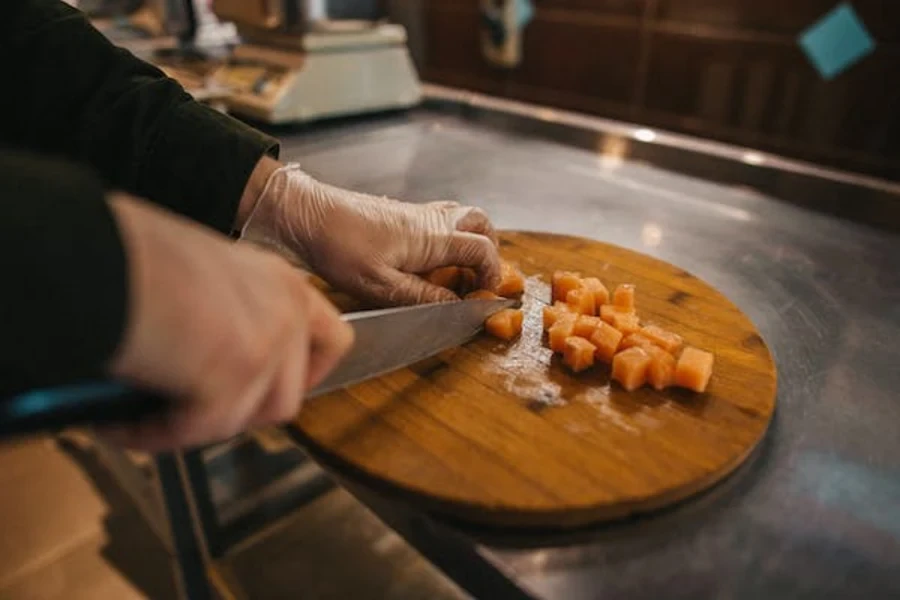
John Boos and Teakhaus Boards: Require regular oiling and hand washing, which can be more labor-intensive but essential for maintaining the wood’s quality and hygiene.
OXO Plastic Board: Offers ease of maintenance, being dishwasher safe. However, it may need more frequent replacement due to wear and tear.
BambooMN Board: Bamboo’s natural properties make it less porous and easier to clean, though it still requires proper drying to prevent warping.
Aesthetic appeal:
Larch Wood Board: Known for its striking end-grain pattern, it doubles as a piece of kitchen art, adding aesthetic value to the cooking space.
BambooMN Board: While functional, bamboo boards may lack the visual appeal of artisanal wood boards but offer a clean, minimalist look suitable for modern kitchen designs.
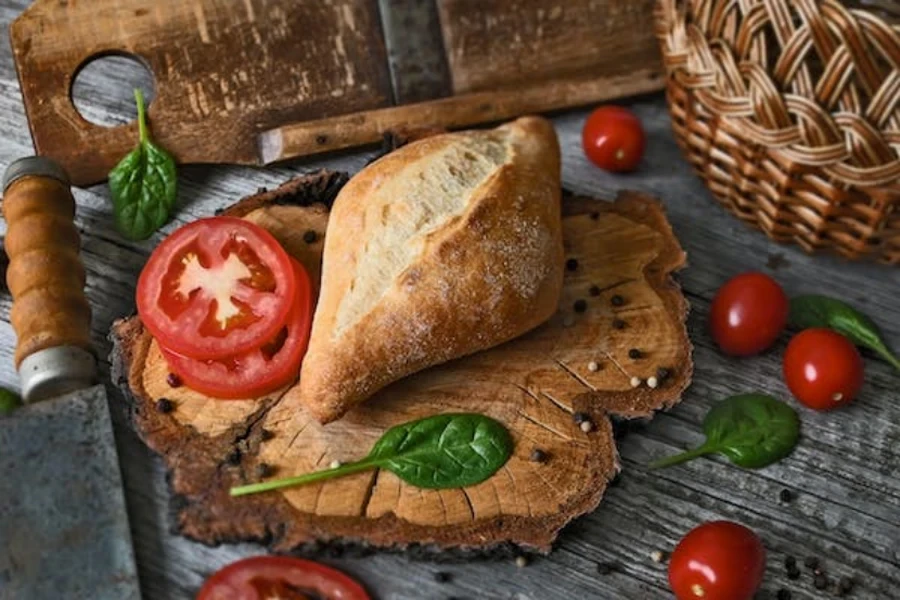
In summary, the choice of a chopping block in 2024 depends on a balance of material quality, design, size, maintenance needs, and aesthetic preferences. Wooden boards like those from John Boos and Teakhaus offer durability and beauty but require more care. In contrast, plastic and bamboo options provide ease of maintenance with some trade-offs in durability and aesthetic appeal. Each model presents a unique combination of features, making them suitable for different kitchen environments and culinary practices.
Concluding thoughts
Selecting the right chopping block in 2024 involves a nuanced understanding of various factors such as material quality, design, size, maintenance, and aesthetic appeal. The market offers a diverse range of options, from the durable and classic wooden boards by John Boos and Teakhaus to the practical and easy-to-maintain plastic models like OXO Good Grips. Each type caters to different culinary environments and preferences, balancing functionality with style. For professionals in the industry, making an informed decision means considering these aspects to choose a chopping block that not only meets the demands of their culinary tasks but also complements the efficiency and hygiene standards of their kitchens.
